Best Places to Go for an Anniversary Trip

Searching for the best places to visit for your anniversary? Well, you are in the right place! An anniversary trip should feel like more than just another holiday since it’s a celebration, a memory in the making. I’ve sought out destinations where romance and adventure blend seamlessly. If you base yourself in one of these hidden gems for a few days or as a local like we did, you can day trip to all the places around you. From fairytale landscapes and timeless ruins to serene beaches and awesome drives, here are some unforgettable picks for your next anniversary getaway.
- My Favorite Places to Visit for Anniversary in the U.S.
- - Jacksonville, Florida - Las Vegas - Walpole, New Hampshire
- - Lake Havasu City - Oklahoma City - New York City
- - Breckenridge, Colorado - Eatwith for Foodies
- Best Romantic Anniversary Vacation Ideas Abroad
- - Verve Rally - Queenstown, New Zealand - Scottish Vacation
- - Shop Hop, Buenos Aires - Toronto - Loen Skylift, Norway
- Best Anniversary Mindfulness Retreats
Best Places to Visit for Anniversary in the U.S.
Our anniversaries have been some of the best trips we've taken in the U.S., whether we had time for just a quick day trip or a relaxing weekend getaways. Here are my favorites and I hope you enjoy them too.

1. Jacksonville, Florida
Just a short drive east of downtown, the city barrier islands offer some of the most unspoiled coastline I've ever visited in northeast Florida. In fact, for our anniversary, this city turned out to be the perfect mix of coastal beauty, city buzz, and hidden romantic spots (we flew in from Austin) but you can drive 2 hours from Orlando. It’s a city that stretches out along the St. Johns River and the Atlantic Ocean, giving you the best of both worlds: lively neighborhoods with arts, dining, and nightlife, and wide sandy beaches just minutes away.
We enjoyed our morning walks on Neptune Beach, then visited the Cummer Museum of Art & Gardens before checking into Margaritaville Jacksonville Beach for two nights where I loved waking up with views of the beach (of course!).
We also enjoyed the Riverside Arts Market and the walking trails in Timucuan Preserve.
- Location: In northeastern Florida along the St. Johns River, near the Atlantic coast and south of the Georgia border
- Drive Time from Orlando: ~2.5 hours north
- Vibe: Relaxed coastal city with a quiet spark
- Best Time to Visit: March–May or September, early November for breezy days and fewer crowds
- Location: Map & Directions
- Location: Southern Nevada, in the Mojave Desert near the borders of California and Arizona
- Location Map
- Location: In southwestern New Hampshire in Cheshire County, along the Connecticut River north of Keene and east of Bellows Falls, Vermont
- Drive Time from Boston: ~2 hours northwest
- Best Time to Visit: Early to mid-October for peak foliage and orchard season
- Location: In western Arizona along the Colorado River, near the California border, south of Bullhead City
- Drive Time from Phoenix: ~3.5 hours northwest
- Best Time to Visit: October–April for cooler temps and fewer crowds
- Location: Central Oklahoma, in the Southern Plains region of the United States
- Distance: 3 hours north of Dallas, 1.5 hours from Tulsa
- Best Time to Visit: Spring and fall for mild weather and festivals
- Location: Carriages line up along Central Park South (near 59th Street)
- Vibe: Romantic, floral, timeless
- Highlights: Blooming cherry trees, Bow Bridge, carriage ride through Central Park, candlelit dinner nearby
- Best Time to Visit: April–May for peak blossoms; evenings for a softer glow
- Cost: Standard rides ~$60–80 for 20 minutes; longer routes available
- Hours: Daily, 10am–midnight
- Location: In central Colorado in Summit County, high in the Rocky Mountains along the Tenmile Range, southwest of Denver
- Drive Time from Denver: ~2 hours west
- Best Time to Visit: Late September–early October for golden aspens and crisp air
- Highlights: Homemade meals, market tours, hands-on cooking classes, cultural exchange
- Best Time to Book: A few weeks in advance; evenings and weekends fill up quickly
- Cost: Typically $40–$100 per person depending on city, course, and experience
- Route: Various curated routes across Europe. Past editions included London to Venice, Geneva to Monaco, and more
- Vibe: Luxury, camaraderie, open-road exhilaration
- Highlights: Scenic routes, luxury hotels, curated dining, photo ops, and a non-competitive spirit
- Best Time to Join: Summer (June–September); exact dates vary by route
- Cost: Packages typically range from £6,000–£15,000 per car (based on itinerary and accommodation tier)
- Who It’s For: Car lovers, couples, adventure seekers. No racing experience required
- Drive Time: Queenstown to Glenorchy ~45 minutes along Lake Wakatipu
- Vibe: Queenstown: adventurous, lively; Glenorchy: serene, intimate
- Best Time to Visit: Late spring through early autumn for clear skies and comfortable temperatures (in New Zealand seasons are reversed, so that means December through March)
- Cost: Free to explore landscapes; gondola ~$50; fine dining varies ($$$)
- Best Airport: Edinburgh (EDI) or Glasgow (GLA)
- How Many Days: 7–10 for a full walking experience
- Time of Year to Visit: June–September (long days & mild weather)
- Tour Provider: Country Walkers
- Regions Covered: Scottish Borders, Loch Lomond & The Trossachs, Highlands (routes may vary)
- Vibe: Intimate, unhurried, quietly profound
- Don’t Miss: Local stories from the guides, countryside inns, shared tea in the rain
- When to Go: Late spring through early fall for wildflowers, long days, and gentle weather
- Location: Buenos Aires, Argentina
- Vibe: Elegant, curated, deeply local
- Highlights: Private shopping with an expert guide, access to independent designers, personalized route based on style and budget
- Best Time to Visit: March–May or September–November for mild weather
- Cost: Tours start around $150–$200 USD per couple; purchases vary
- Hours: Typically 3–4 hour sessions; mornings and afternoons available
- Location: In southern Ontario along the northwestern shore of Lake Ontario, southwest of Oshawa and north of the U.S. border at Niagara
- Location Map
- Location: In western Norway in the village of Loen, rising from the Nordfjord to the top of Mount Hoven in the Vestland region
- Best Airport: Ålesund (AES) or Bergen (BGO)
- Cost: Round-trip skylift ~NOK 600 (~$55 USD) or consider a tour
What I loved best:
Brunch at Secret Garden Café was a standout for me - The shrimp were tender and smoky, the grits creamy and rich, and everything smelled like garlic and bay leaf and sunshine through a window. We ate slowly, enjoying our time together.

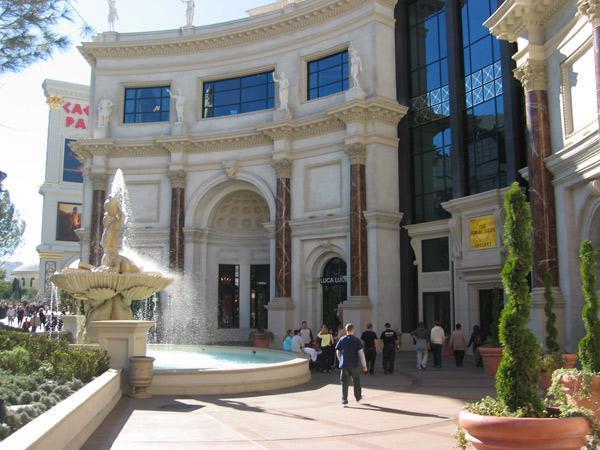
2. Las Vegas
We absolutely love Las Vegas, and have been many times. This was easily one my coolest anniversary places to visit because it offers a bit of everything—world-class dining, big-name entertainment, and stunning resorts. In addition, being based here makes it easy for us to access desert landscapes nearby.
Chances are that unless you are driving in from a neighboring state like California, you will land at Las Vegas airport so I recommend a two day stay in Las Vegas first to get to know this unique city.
One of the most amazing gems I found in "Sin City" was the Neon Museum near Downtown and walking through the glowing collection of vintage casino and motel signs felt unusual, exciting, and completely magical.
For breakfast, I made my way to EAT, close to Fremont Street, and it was the perfect start to my day with fresh, affordable food in the relaxed atmosphere which made it one of the coolest breakfast spots I’ve ever been to.
The Mob Museum right after also near Fremont Street turned out to be a very unique place too, with immersive exhibits and dramatic stories of organized crime that made it unforgettable (but I thought $34.95 General admission was expensive).
Another must-see spot tucked right inside Circus Circus, the Adventuredome ($25) is packed with roller coasters, carnival-style games, bumper cars, and even a mini golf course.
Further down the Strip, Bellagio Fountains are not to be missed with a new dancing water show starting every 15-30 minutes!
Check availability or prices at the Venetian where we had a cool four day stay with great Italian-inspired dining, 5-star Caesars Palace (my photo is below) or the Bellagio, another favorite of mine because of the dancing fountain show every 15-30 minute throughout the day.
What I loved best:
Our suite at the Venetian for four days had incredible views of the Strip, especially at night. I found it super convenient to take the elevator down to the spa level and treat myself to a 60-minute massage, my personal highlight.

3. Walpole, New Hampshire
Fall in this small New England town was a dream for our anniversary. This quickly became one of my favorite small towns to visit in late November because it feels like stepping straight into a New England postcard which was the perfect romantic setting! We discovered crisp mornings and golden afternoons, and for best of all for me as a a garden lover, gardens were still bright with late-season blooms!
I also loved discovering that fall brought the Walpole Fall Artisans Tour, orchard festivals in the surrounding countryside, and lively harvest events at nearby farms.
We touched down at Manchester-Boston Regional Airport and filled seven bright days with scenic drives along the Connecticut River Byway, hikes up Fall Mountain, quiet walks through the historic village green, and doughnuts from farm stands dotting the countryside.
Don't skip a slow walk through Alyson’s Orchard and pick apples together. It's very romantic in the fall!
What I loved best:
I admired Walpole’s Colonial-era architecture, its lovingly preserved main street, and Connecticut River Valley views that completely won me over.

4. Lake Havasu City, Arizona
This is one of my favorite places to slip away to for our anniversary because it offers that perfect mix of sunshine, open space, and easygoing desert energy.
I especially adored visiting this quirky desert oasis in October, when the days were still warm and sunny, the nights cooled off just enough to stroll along the water. In addition, seasonal boat parades and Halloween-themed events along the shoreline gave the whole city a festive, slightly playful vibe. I also loved the way the annual London Bridge Days brought parades, fairs, and a touch of old-world charm right to the Arizona desert.
We drove about 2.5 hours from Phoenix, spent a long romantic weekend exploring the lake by kayak and pontoon, wandered through the shops and pubs of the English Village, and hiked the rugged trails of Sara Park and the scenic Crack in the Mountain. Sunset cruises on Lake Havasu offered sweeping views of the mountains, and evenings by the water felt unforgettable.
Local tip: If you don't have a whole weekend to celebrate your anniversary, you can also day trip here from Phoenix, just get an early start before the sun gets too strong!
What I loved best:
Staying at the historic London Bridge Resort for two nights was my personal highlight. I loved its unique setting right at the foot of the bridge, sipping their signature Lake Havasu Sunset cocktail by the pool, and learning about how the bridge was painstakingly transported stone by stone from England in the late 1960s—a surreal slice of history in the middle of Arizona’s desert.

5. Oklahoma City
This is one of my favorite cities to visit because it offers a bit of everything: diverse neighborhoods, art, and fantastic food. In addition, I love that it’s incredibly easy to get around.
We weren't in a hurry so we drove about 6 hours north from Austin TX. When we arrived in "The Big Friendly", we stopped for a late lunch at Paseo Grill. I ordered the filet and deviled eggs. The steak was buttery and seared to perfection.
Afterwards we explored the Paseo Arts District. I admired unique murals, a hidden garden, cozy courtyards and art galleries. I stopped in a shop with one-of-a-kind pottery and textured canvases.
One of my favorite stops was the American Banjo Museum ($8) which felt like walking through America’s musical heartbeat.
We also explored the powerful exhibits at the Oklahoma City National Memorial, walked along the Oklahoma River trails, admired the striking architecture of the Civic Center and Scissortail Park, and got a taste of cowboy culture at the National Cowboy & Western Heritage Museum.
Later, we ended the night where you’re supposed to: Edna’s. It was loud and easy and alive.
What I loved best:
After checking into our base for the 2-day weekend, Hyatt Place Oklahoma City / Bricktown, we headed to Mickey Mantel's, just steps from the canal. There, I had the Chilean sea bass, crisp on the outside, soft as clouds inside, plated with garlic mashed potatoes and grilled asparagus.
A downside? The summer heat pressed down hard in the afternoons. I found myself darting between shady spots downtown, wishing for cooler air sooner in the day.

6. New York City Anniversary Carriage Ride in Spring
New York City is the perfect pick when I want an anniversary that feels both exciting and intimate. We lived in NYC for ten years and one year we decided to celebrate our anniversary with a carriage ride through Central Park, which quickly became my favorite romantic thing to do.
Most of all, I loved taking a spring carriage ride because it’s such a gentle, low-stress way to reintroduce yourself to the city after winter. You just hop in near the park entrance, wrap yourself in a light blanket if there’s still a breeze, and let the driver guide you past blooming magnolias, willow trees, and sparkling ponds. It feels like the easiest, most charming way to watch New York wake up for the season.
I loved passing under the trees, sharing the path with bikers and walkers (there are usually no cars once your horse enters the park). You can see the New York skyline all around you and have a quiet chat!
You can spend the night at the Plaza hotel or somewhere near Central Park so that you don't have to walk too far.
What I loved best:
We rented a row boat after (something that had been on my bucket list for a while!) which was my personal highlight.

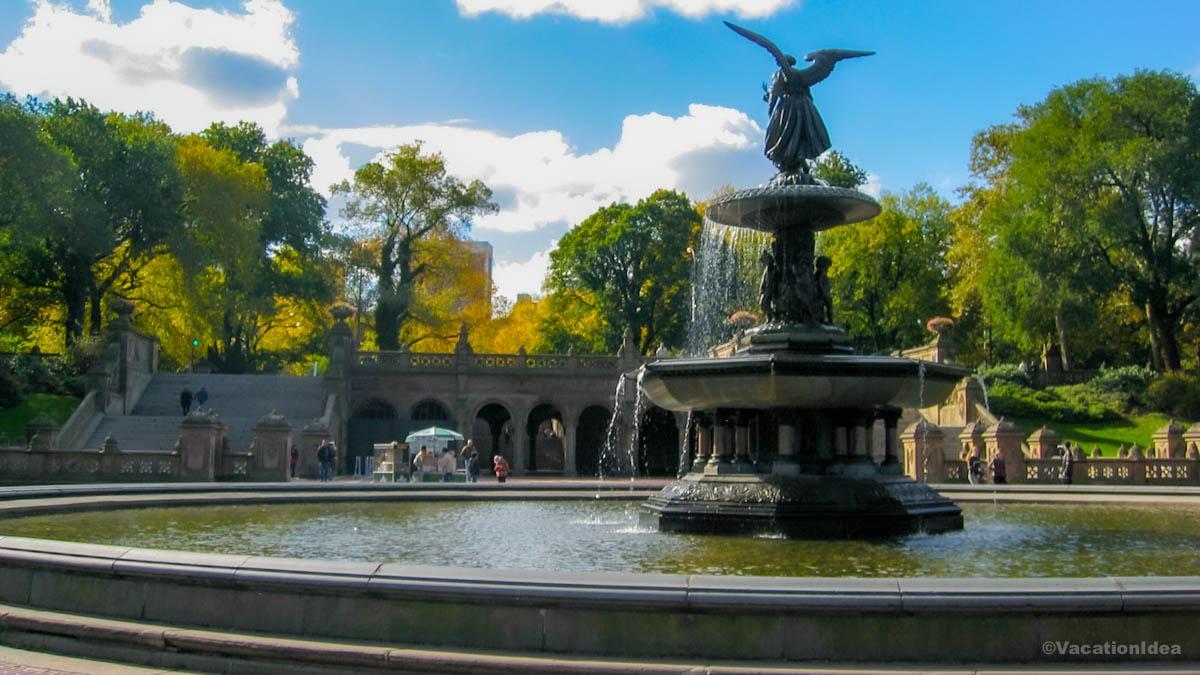

7. Breckenridge, Colorado
This is one of my favorite anniversary destinations! Why? First off, this mountain town feels like a cozy alpine retreat wrapped in breathtaking mountain views. Most importantly, Breckenridge feels tailor-made for romance which gave me an idea for our anniversary trip this month.
Tucked high in the Rockies, it’s all about crisp mountain air, colorful Victorian streets, and stunning alpine backdrops that shift with the seasons. We got married in early October which is the perfect time for a fall foliage anniversary getaway in Breckenridge, Colorado.
In addition, just beyond the town, Breckenridge opens into some of the most unspoiled high-country terrain I’ve ever explored!
After checking into Marriott's Mountain Valley Lodge for two romantic days, we took the gondola up the mountain, looked for Isak Heartstone the Troll (Breckenridge’s whimsical wooden sculpture in the woods) which we didn't find but that's ok.
What I loved best:
Next day breakfast at Columbine Café with fried eggs and housemade toast was my personal highlight. It smelled like sage and maple, and the potatoes were crisp and caramelized. We lingered over mugs of strong coffee.

8. Eatwith: At Home Around the World
Ready for a trip where food feels like an adventure in itself? After a quick 60-minute train ride from Pisa to Florence, Italy, we shared a soulful home-cooked meal with an EatWith host whose recipes had been passed down for generations.
Eatwith wasn’t a restaurant. It was an open door. A seat at a local’s table, where the best flavors came with stories, and dessert always came with laughter.
You don't have to travel to Florence either. Eatwith offers hosts all around the world so chances are you can easily plan a local, affordable anniversary experience.
What I loved best:
Delicious flavors close to home, without having to do extensive travel planning was my personal highlight.
Best Romantic Anniversary Vacation Ideas Abroad
For us, celebrating an anniversary is the best excuse to treat ourselves to a once-in-a-lifetime trip, and, yes, I love tropical islands and beaches, but there were other cool trips we've enjoyed that I'm sharing with you today.

9. Verve Rally, Europe
Ready for an anniversary trip that feels like it belongs in a movie? I also wanted to include a trip that I haven't done myself but have been planning on it. I think you will love it if you can make it happen. Verve Rally is about seeing Europe’s most iconic roads from behind the wheel of a dream car, with just enough glamour to make every pit stop feel like a film set.
This truly is one of a kind anniversary journey that I've been dreaming about for years!
What I loved best:
Visiting many towns in a short time is what I like best.

10. Queenstown & Glenorchy, New Zealand
The drive from Queenstown to Glenorchy is one of the most beautiful I’ve ever taken, a perfect romantic backdrop on our anniversary.
We actually spent two months based in various vacation rentals here so it was no surprise it coincided with our anniversary. It's got a bit of mystery and magic and I think that's why the Lord of the Rings was filmed here.
You can drive through Otago wine country, hold hands on the Glenorchy jetty at dusk after watching an incredible sunset, take the Skyline gondola up for a view and end the day with great food in Queenstown (dinner at Rata for example is very romantic).
One negative for me was the landing at Queenstown airport was very rough. The airport is between two mountain peaks and even in late spring (December), the ride during the last 15 minutes was extremely bumpy, probably among my top three scariest landings! Despite this, Queenstown is one of my top recommendations for a unique couples' aniversary vacation idea.
What I loved best:
Scenic drive around the lake was my favorite!
For me, Queenstown is one of the best spots for a cool Anniversary trip. It's romantic, secluded, and a favorite escape I can’t wait to return to!
I loved that we could start our morning with coffee on Queenstown’s lakefront, then set out along the shoreline as the road gently follows the water toward the mountains.

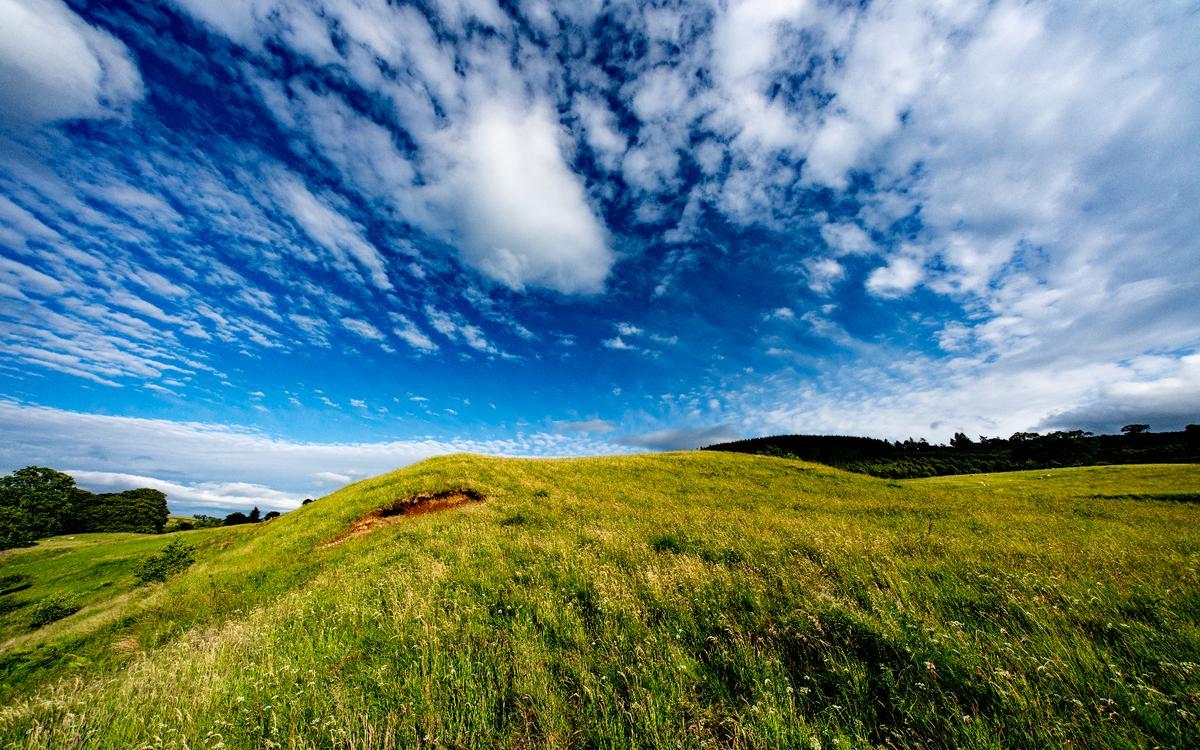
11. Scottish Vacation
Ready for a vacation where the journey itself is the highlight? Welcome to Scotland, where dramatic landscapes, misty lochs, and timeless traditions set the scene for an unforgettable walking vacation. My favorite month to visit is June! In 2023 we spent four weeks in Scotland in a cottage in Crieff.
This is one of the best anniversary vacation ideas because in June, the Highlands and islands come alive with long days of golden light, wildflowers in bloom, and fresh breezes off the North Sea. Walking here feels like stepping into a living storybook, with ancient castles, cozy villages, and sweeping mountain views guiding your journey.
Over several days, you’ll follow trails that wind through heather-clad hills, along rugged coastlines, and beside tranquil lochs.
What I loved best:
How each step offers new perspectives was my favorite highlight—whether it’s the quiet beauty of a glen, the bustle of a market town, or the warmth of a local inn at the end of the day.
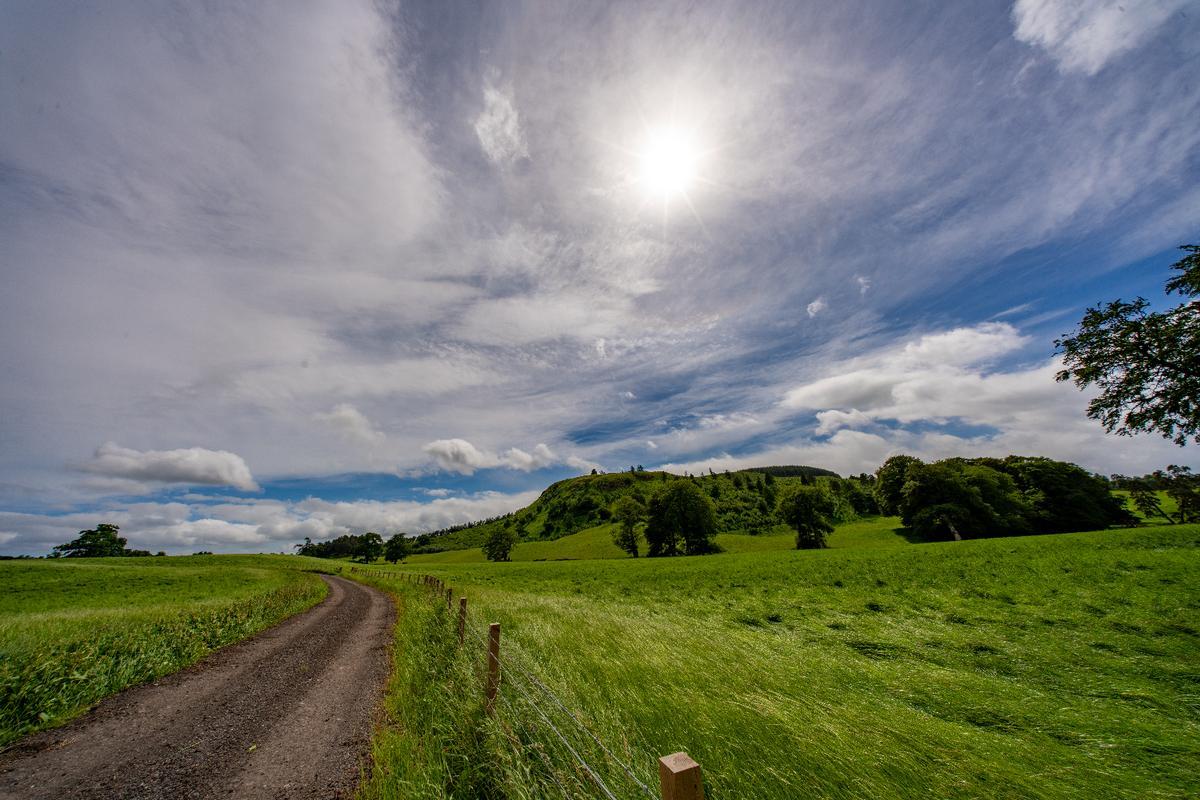
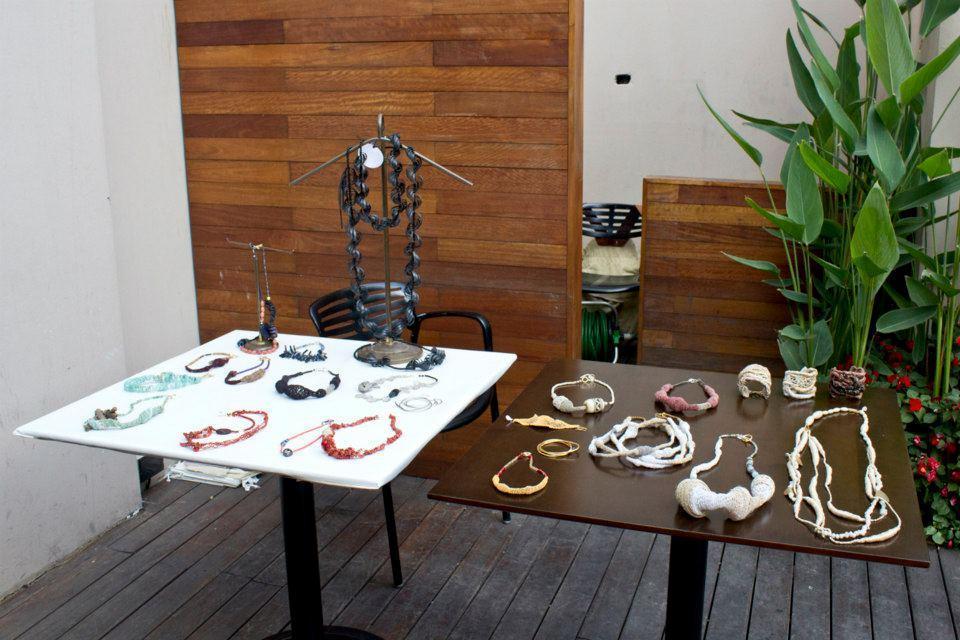
12. Shop Hop, Buenos Aires
This is one of my favorite things to do in Buenos Aires because it makes the city’s style scene feel completely accessible! Shop Hop takes you through the best independent designers, tucked-away ateliers, and concept stores—places you’d never find on your own—and the whole experience is relaxed and beautifully paced.
We wandered with a local guide who knew every secret showroom, artisan studio, and quiet alley humming with design.
What I Loved Most: How personalized it felt. Each stop was tailored to our taste, each conversation layered with history and warmth. It wasn’t just retail therapy. It was cultural connection with a stylish edge.
My highlights? After trying on handmade leather loafers, we stopped at Café Rivas for a quiet lunch. I had grilled provoleta cheese with roasted tomatoes and fresh sourdough. The cheese crackled at the edges, the bread was soft and smoky, and it all smelled like basil and warm wood.
What I loved best:
We sipped tea, bags at our feet, feeling like locals for an afternoon was my favorite highlight.

13. Toronto, Ontario
Toronto is one of my favorite cities to visit in North America because it blends lakefront beauty with great attractions and world-class food. In addition, it’s incredibly easy to get around by transit or on foot.
The city really came alive for me in June — patio season was in full swing, the waterfront sparkled under long golden evenings, and the city’s many festivals brought a contagious buzz to every neighborhood. With warm, sunny days and comfortably cool nights, it was the perfect time to explore Toronto’s unique downtown, parks, and scenic Lake Ontario shoreline before the heavy summer crowds and peak hotel rates arrived.
I flew into Pearson Airport and spent four lively days in a Corner guest room with a King bed at the 4-star Anndore House which was spacious and elegant.
During our visit, I enjoyed cycling along the Martin Goodman Trail, browsing vintage shops and street art in Kensington Market, and dining al fresco at Italian hotspot Terroni on Queen Street West. The weather was generally mild and sunny, though evenings could get breezy by the lake, so a light jacket came in handy!
Dinner Auberge du Pommier was incredible - I had delicious Atlantic salmon with celeriac rémoulade & kale.
My favorite highlight:
When we arrived I booked a 60-minute massage at Elmwood Spa which offers four floors of services and treatments, especially water therapy treatments.
One of the absolute best ways I’ve explored it is through Tasty Tours Toronto. I joined one of their guided food adventures, and it was pure joy from start to finish. We walked through neighborhoods like Kensington Market and Chinatown, sampling everything from decadent chocolates to unusual international treats.

14. Loen Skylift, Norway
This is one of my favorite places to visit because it combines jaw-dropping scenery with almost zero effort. It was perfect for my anniversary trip with my husband and we loved gliding from the edge of the fjord straight up into the mountains in just a few minutes! Suddenly we were standing in crisp alpine air with sweeping views of emerald water and snow-dusted peaks. Loen Skylift's incredibly easy to get to, yet the reward feels like something that should require hours of hiking.
We based ourselves in Hotel Alexandra in Loen for three romantic days and took Loen Skylift up two morning in a row. It truly was a spectacular way to celebrate our anniversary.
What I loved best:
Lunch at Hoven Restaurant, right at the summit really stood out! I had stew with root vegetables and cloudberry compote. The stew was rich and savory, the meat tender, the broth filled with thyme and something smoky. It smelled like pine, pepper, and the cold. We ate slowly, every bite a warm answer to the wind outside.
Best Anniversary Mindfulness Retreats
Sometimes the stress of the daily schedule just overwhelms and in those times I find the best thing to do is to slow down in a natural setting. These are some of my favorite places for anniversary stays that have given me just that.

15. Skyterra Wellness Retreat, Pisgah Forest, NC
This retreat left me completely recharged! Tucked away in the lush Blue Ridge Mountains, this place is surrounded by towering trees, fresh mountain air, and peaceful streams. The setting itself feels like an invitation to slow down and breathe deeply. The design is warm and inviting, with cozy lodge-style details and airy, light-filled spaces that create an atmosphere of calm comfort.
My private cottage for three days was thoughtfully designed for rest and renewal, with modern rustic touches, soothing earth tones, and plenty of space to disconnect from daily stresses. Waking up to the quiet of the forest each morning was nothing short of magical.
What made my stay stand out was the holistic approach to wellness. Days were filled with mindful movement classes, personalized fitness sessions, guided hikes through Pisgah National Forest, and nourishing, chef-prepared meals crafted with health in mind. Each element worked together to nurture both body and mind.
My favorite highlight was the peaceful morning yoga on the outdoor deck with mountain mist rolling in, and the creative, farm-fresh meals that felt indulgent yet nourishing.

16. Franciscan Spirituality Center, Milwaukee, Wisconsin
This is one of my favorite places to visit because it offers a gentle, grounded kind of peace that’s hard to find in the middle of a city. I love that even in cooler months, the atmosphere feels warm and welcoming, making it an easy place to slow down, and reflect.
My room for two days was modest yet comfortable, with clean lines, soft lighting, and a contemplative feel — designed less for distraction and more for rest and reflection. The simplicity made space for mindfulness to truly unfold.
What makes this center special is its deep emphasis on spiritual renewal. Guests can take part in guided retreats, contemplative prayer, meditation, and creative workshops, or simply enjoy the quiet of the chapel and gardens. The Franciscan values of hospitality and compassion are woven throughout every detail, offering a sense of community and belonging.
For me, Franciscan Spirituality Center in Wisconsin, is one of the best mindfulness retreats because it's peaceful and unique!
In addition, I love that there's a lot to do nearby as well, including the Milwaukee Art Museum, the Harley-Davidson Museum, the Milwaukee Public Market, and the Pabst Mansion. You can also explore the Milwaukee Riverwalk, visit the Mitchell Park Domes, or enjoy a show at American Family Field.

17. Stillpoint Lodge
This Alaskan retreat felt like a hidden gem at the edge of the world, and one of the most serene places I've ever been to! Accessible only by boat or seaplane, the lodge is tucked away in Halibut Cove, surrounded by dramatic fjords, glaciers, and the pristine waters of Kachemak Bay. The atmosphere is equal parts wild adventure and serene escape, where untouched Alaskan wilderness sets the stage for deep renewal.
My private cedar chalet for two days combined rustic charm with luxurious touches — think cozy fireplaces, natural wood finishes, and expansive windows that framed breathtaking views of the water and mountains. It felt both intimate and indulgent, perfectly designed for unwinding in nature’s embrace.
I think that Stillpoint Lodge is one of the best mindfulness retreats in the United States. Why? What I loved most was how each day balanced adventure with mindfulness. Guided hikes, kayaking alongside otters, and wildlife excursions blended seamlessly with yoga, meditation, and nourishing meals crafted from locally sourced ingredients. The rhythm of life here felt deeply restorative, shaped by both the raw power of Alaska and the gentle care of the retreat staff.
My favorite highlight was ending the day with meditation by the fire while the northern sky glowed with soft twilight.
Booking Checklist
1. Book Your Flight - I use Expedia because I like their mobile app with my itinerary. They've helped me re-book flights on many occasions. Once you reach their Gold tier, support is especially good.
2. Book Your Hotel - I use Booking.com or Expedia, depending on my destination.
3. Book Your Rental Car - I use Expedia.
4. Book your tours on Viator or Get Your Guide.
5. If you are planning to visit more than three national parks in the next 12 months, buy the America the Beautiful Pass.
